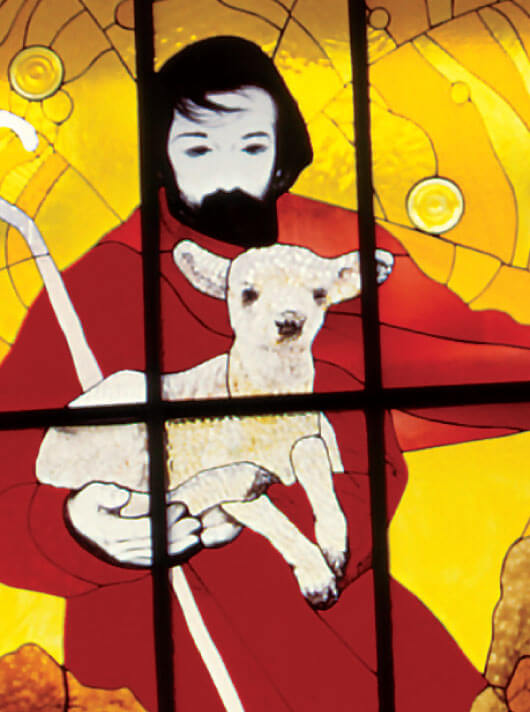
Sunday Readings: Acts 13.14,43-52; Revelation 7.9, 14-17; John 10.27-30
JESUS: My sheep hear my voice.
I know them, and they follow me.
I give them eternal life,
and they shall never perish.
No one shall snatch them out of my hand.
My Father, who has given them to me,
is greater than all. No one can snatch them
from the Father’s hand.
The Father and I are one.
John 10.27-30
Sheep recognize the voice of their shepherd and survive by following where the shepherd leads — to fresh pasture, to water, into a pen for the night. The sheep have faith in the shepherd who comes to give them abundant life. Jesus identifies himself as the good shepherd who lays down his life for this sheep. He contrasts himself with hired hands who run when wolves threaten the flock. Jesus’ relationship with believers is intimate. “I know my own and my own know me, just as the Father knows me and I know the Father” (14-15). Belonging of this kind happens in families.
Jesus’ words are plain but theologically loaded. “My sheep hear my voice,” Jesus says. Hearing is believing. Those who believe recognize that Jesus reveals God. They accept his teaching. “I know them, and they follow me,” Jesus adds. To know refers to deeply personal belonging. To follow expresses wholehearted allegiance.
Jesus promises believers eternal life and his Father guarantees his promise, which leads Jesus make the inflammatory claim: The Father and I are one. Jesus’ hearers reach for rocks to stone him for blasphemy, for making himself one with and equal to God.
The community out of which John’s gospel emerges has a high Christology; Jesus is from above. He pre-exists with the Father. All things come into being through him (John 1.3). No one has seen God but the only Son reveals God (John 1.18). Faith in Jesus and his works is faith in God. The high Christology of John’s community creates hostility with other Jews. In fact, Jesus’ claims in Sunday’s gospel are fighting words to many listeners — blasphemous, stoning words.
What insights into your relationship with God do you find in the imagery of the good shepherd?